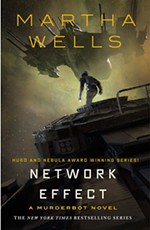Frankenstein: A Trouble Puppet Show
A creative adaptation that offers the pleasure of seeing good puppeteers at work
Reviewed by Elizabeth Cobbe, Fri., Nov. 7, 2008

Frankenstein: A Trouble Puppet Show
The City Theatre
Through Nov. 16
If you don't feel like Halloween 2008 gave you enough of the haunted-house shrieks and giggles, take heart. Also take liver, entrails, musculature, and, above all, brains. Trouble Puppet Theater Company's production of Frankenstein provides audiences with plenty of spookiness about the scientist who creates a monster from a graveyard of leftover body parts. It's a creative take on one of the season's favorite horror stories, told entirely with puppets.
It should be said: There's Frankenstein, and then there's Frankenstein. Mary Shelley wrote the original novel in 1818. That literary work is as much a gothic horror story as it is an intense scrutinizing of the power humans should or should not wield over life and how a monstrous personality comes into being from innocence. Young Victor Frankenstein gets the bright idea to make a new life from dead body parts, and he's in love with his work and his creation until the very moment that he flips the switch and the creature opens its eyes. At that point, he realizes that the whole thing's an abomination, and he flees in disgust, leaving the monster, with its budding consciousness, to fend for itself.
From this point on, the play goes more the route of the 1931 Frankenstein film, which portrays the scientist as a crazed, arrogant doctor rather than an overeager student. All versions of the story take their monster and its creator on different sorts of journeys, and the Trouble Puppet version wanders through the British prison system, the French Revolution, and the land of gypsies on its way to the showdown between maker and monster.
Speaking of monster: That's one seriously cool puppet they came up with for the creature. This monster ditches the bolts-in-the-neck look in favor of an animated-golem, almost Gollum-like appearance. It takes three puppeteers to move the beast around the stage, and as in the best puppet theatre, you can easily forget about the humans who manipulate and speak for the characters and enjoy focusing only on the puppets themselves.
Both puppets and puppeteers are capable of telling a story that digs deep into the philosophical depths of the original story. The script of Trouble Puppet's version makes a few gestures in that direction: the problems with radicalism, the consequences of attempting to control the natural world. The character of Dr. Frankenstein wobbles into the occasional thoughtful rant, but it never turns into anything cohesive. That's totally fine if you're a Boris Karloff Frankenstein devotee, someone who's looking for the pleasure of a softcore horror show. If you're looking for more, then the dialogue may feel as cobbled-together as the monster in question.
What this Frankenstein does offer is the pleasure one should get from seeing good puppeteers at work. Even the most practiced theatre artist can still get a kick out of being moved to tears or laughter over the fate of what is essentially a wooden stick with a rag around it. Only, in the hands of the right creator, these base materials can be so much more.










